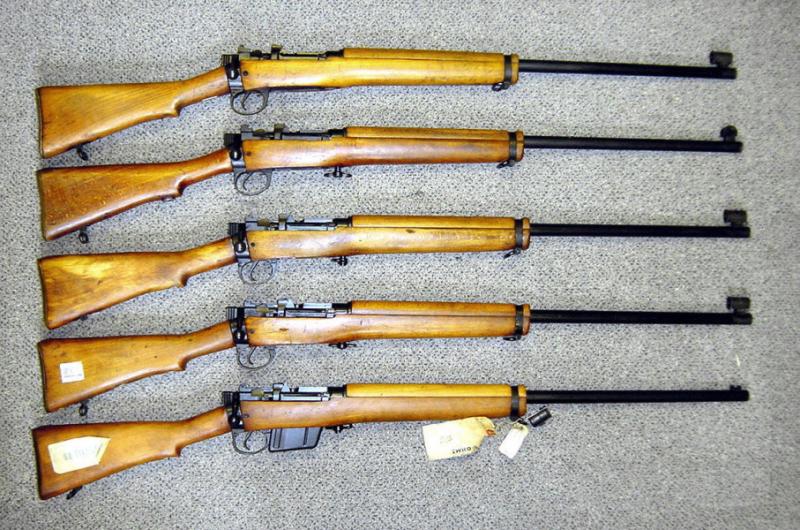The rifles would have been issued without any facility for "customisation", as they were a simple stores item. As the rifles would have gone from Enfield to an Army depot for storage, there would have been no connection between factory and end user.
The later "7.62mm CONV" rifles - which appear to be part of the overall L39A1 production run - did apparently have No8 butts fitted from new. However both of the rifles in my picture above are very late production L39A1s (the unused one is A1111, the mint one is A1217, and came with its original No4 butt as well) and so it appears that normal No4 butts remained standard to the end.
Its not surprising that a No8 butt would match an L39 forend: the majority of No8 butts were finished in the same BLO'd beech as the forends and handguards, and 40-odd years of ageing have given all of the wood the same sort of patina. Indeed, its quite easy to retro-fit a beech No4 butt off a typical 1950s rifle onto an L39 in place of something non-standard (No8, Swing-style or PH Monte Carlo, typically) and achieve an exact match.
One interesting feature of (usually ex-RAF shooting club) L39s is that the woodwork and sights often give the impression of considerable use (dirt, unit marks, wear, etc), yet the bore, bolt-face and feed ramp appear unused. I get the impression that most L39s were fitted with sights, marked with unit ownership marks - and then left knocking about the armoury for thirty years without actually being used much. In the following photo, most of the rifles have had some sort of mod or unit mark and all look "well-used"; in fact it was hard to tell from the feed-ramp and bore that they'd had any use at all:

- Knowledge Library

- MKL Entry of the Month
- Australia
- Austro-Hungarian Empire
- Canada
- Czechoslovakia
- Denmark
- Finland
- France/Belgium
- Germany
- Italy
- Japan
- Norway
- Russia
- South America
- Sweden
- Switzerland
- Turkey
- United Kingdom
- United States
- Yugoslavia
- Is my rifle authentic or a fake?
- Jay Currah's Lee Enfield Web Site
- On-line Service Records (Canada)
- Technical Articles/Research
- Forum
- Classifieds

- What's New?
-
Photo Gallery

- Photo Gallery Options
- Photo Gallery Home
- Search Photo Gallery List
-
Photo Gallery Search
- Video Club

- iTrader












 PM
PM
